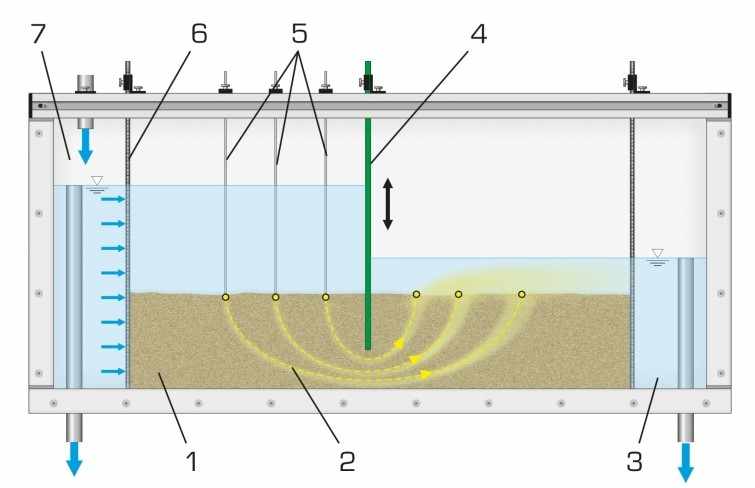FM-117 | Drainage and Seepage Tank
- A self-contained facility for study of flow through permeable media
- The tank has a toughened glass front and corrosion resistant metal back to permit the insertion of pressure tapings as required.
- Six tapping points are provided
- The design of the side supports allows free access to the interior with minimum sight obstruction
- Supply includes sump tank, pump, and starter and control valve. As well as a dye injection system and a selection of models
- Comprehensive instruction manual with data sheets and student experiments
- LxWxH: 1600x600x1450mm
Description
Technical Specification
Media
Practical demonstration and visualization are essential elements of fluid flow study. The Drainage and Seepage Tank has been designed to make an experimental study of flow through permeable media.
The supporting structure of the tank is made from painted mild steel while the sides of the tank are supported and sealed by a well proven method which allows free access to the interior and results in minimum sight obstruction. One side is of toughened glass to give good scratch-free visibility over a long period of use while the other is made of aluminum which permits the insertion of pressure tapping points as required. The ends of the tank are made of steel plate.
Adjustable overflows are provided close to each end of the tank so that constant water levels may be maintained in each half of the tank. These may be lowered to a position close to the bed of the tank for some experiments to provide subsoil drainage. The equipment is self-contained, requiring only an initial fill with cold water and connection to the electricity supply. The sump tank can be emptied to a laboratory drain.


Learning Capabilities
- Seepage underneath a sheet pile wall
- Seepage through an earth dam
- Control of seepage through permeable soils by subsoil drainage
- Distribution of uplift pressure on hydraulic structures
- Reducing uplift pressure and lateral thrust by drainage
- Formation and behavior of ‘quicksand’
- Stability of an earth dam
- Draining an excavation site using wells
Accessories
- Tile drain
- Straight permeable membrane
- Foundation pressure plate
- Curved permeable membrane
- Lateral pressure plate
- Sand 1m³ is required of washed, narrow range sand (coarse) with no fraction finer than 0.5mm (not supply)
Standards
- Machinery Directive 2006/42/EC,
- Working section:
- 1500mm x 100mm x 600mm
- Volume: 80L approx
- Pump
- flow rate: 4m3/h
- head: 4m
- Tank for contrast medium: 0.5L
- Storage tank, stainless steel: 96L
- Measuring ranges
- Pressure tubes: 14x 20…650mmWC
- 230V, 50Hz, 1 phase
Any questions? We are happy to help...
+49 40 670 854 - 0
sales@gunt.de
Newsletter
About Us
EduTech Lahore excels in designing and supplying cutting-edge equipment for Engineering Education in Mechanical, Polymer Chemical, Civil and Control Engineering. Focused on meeting the demand for quality education, we offer cost-effective solutions for the latest teaching equipment.
Contact Info
Head Office (Asia)
EduTech
Lahore
Regional Partner Office (UK)
Sales Partner (Middle East) GCC International FZC
Leave a Message
WhatsApp us

